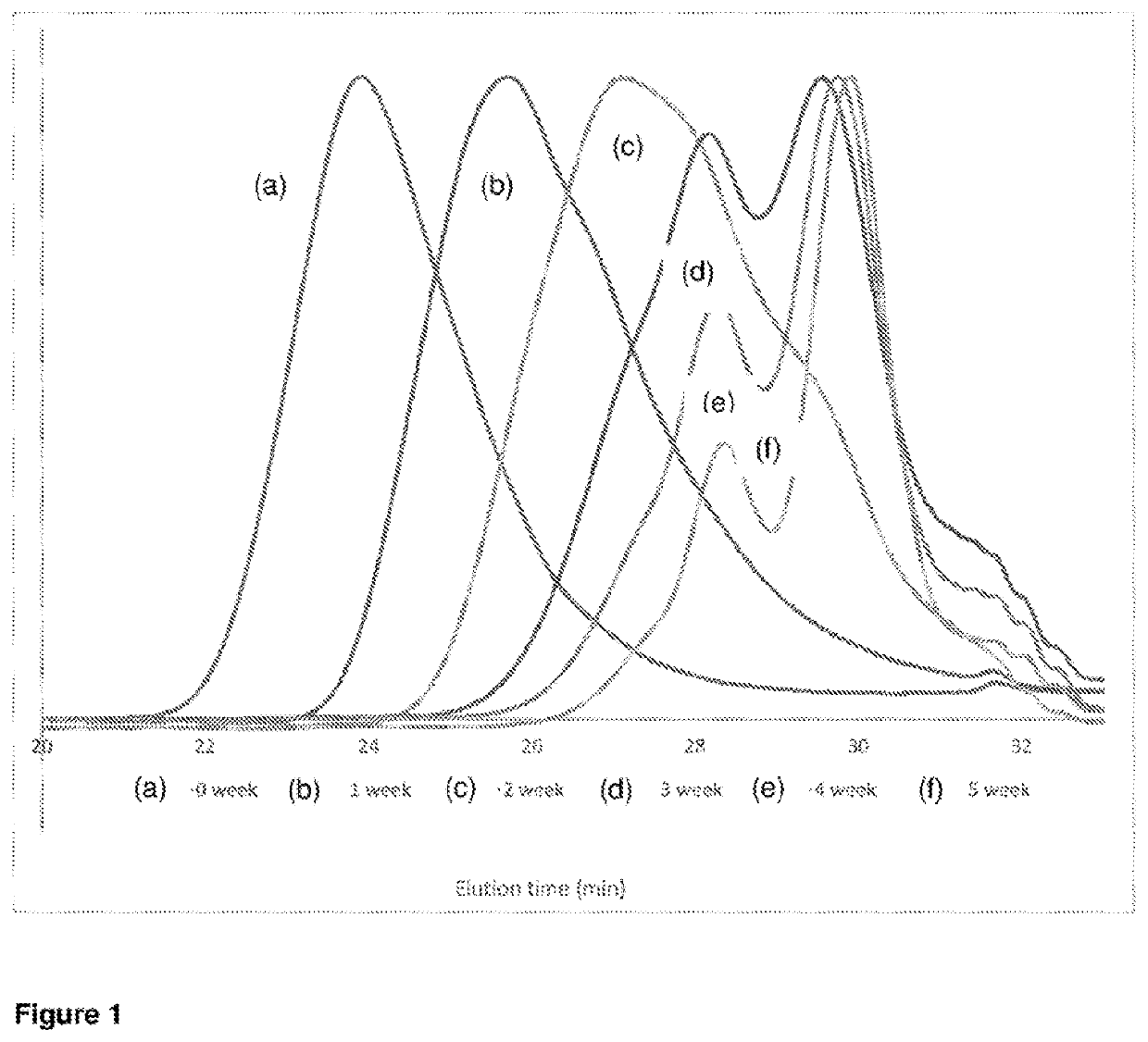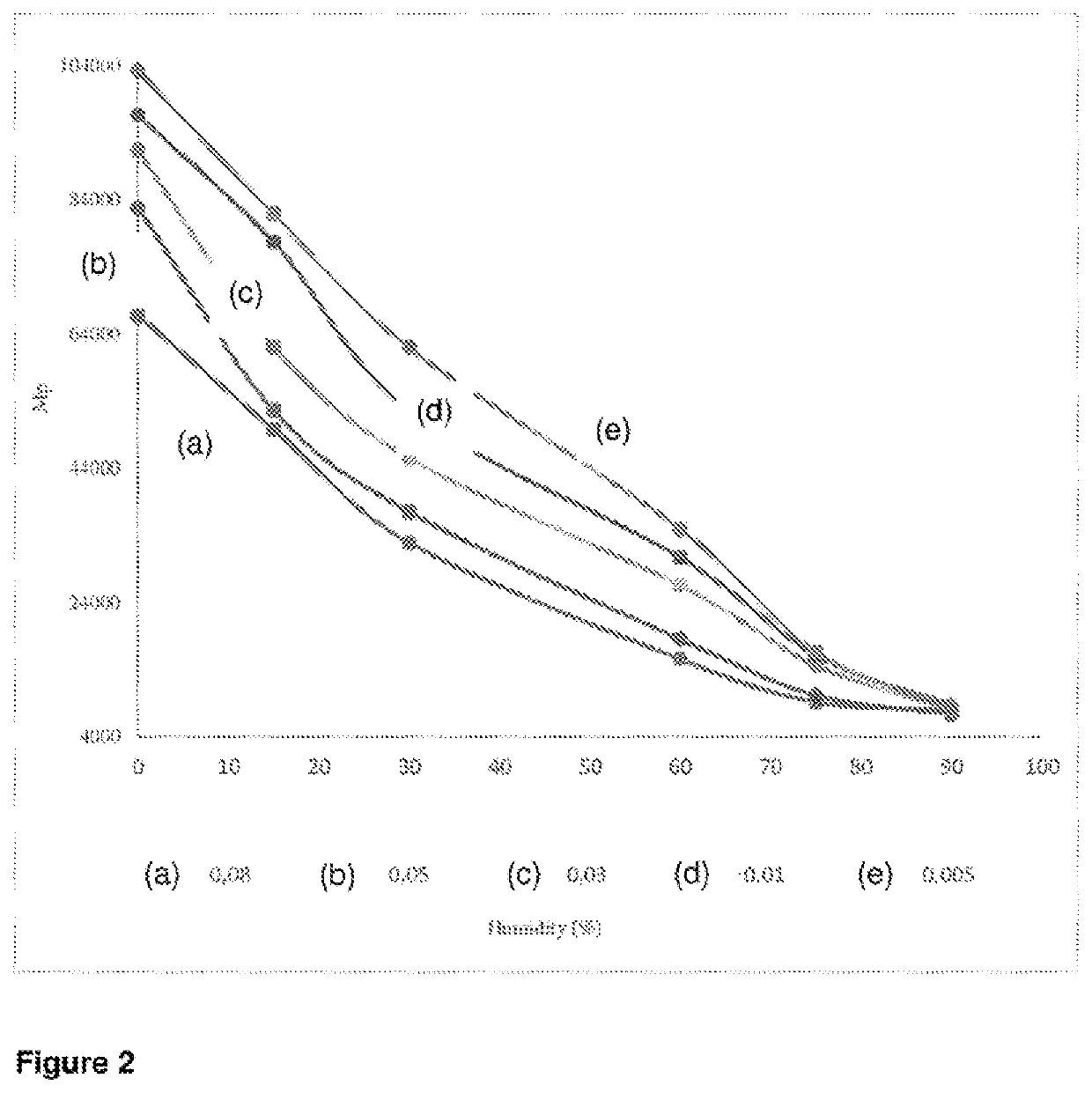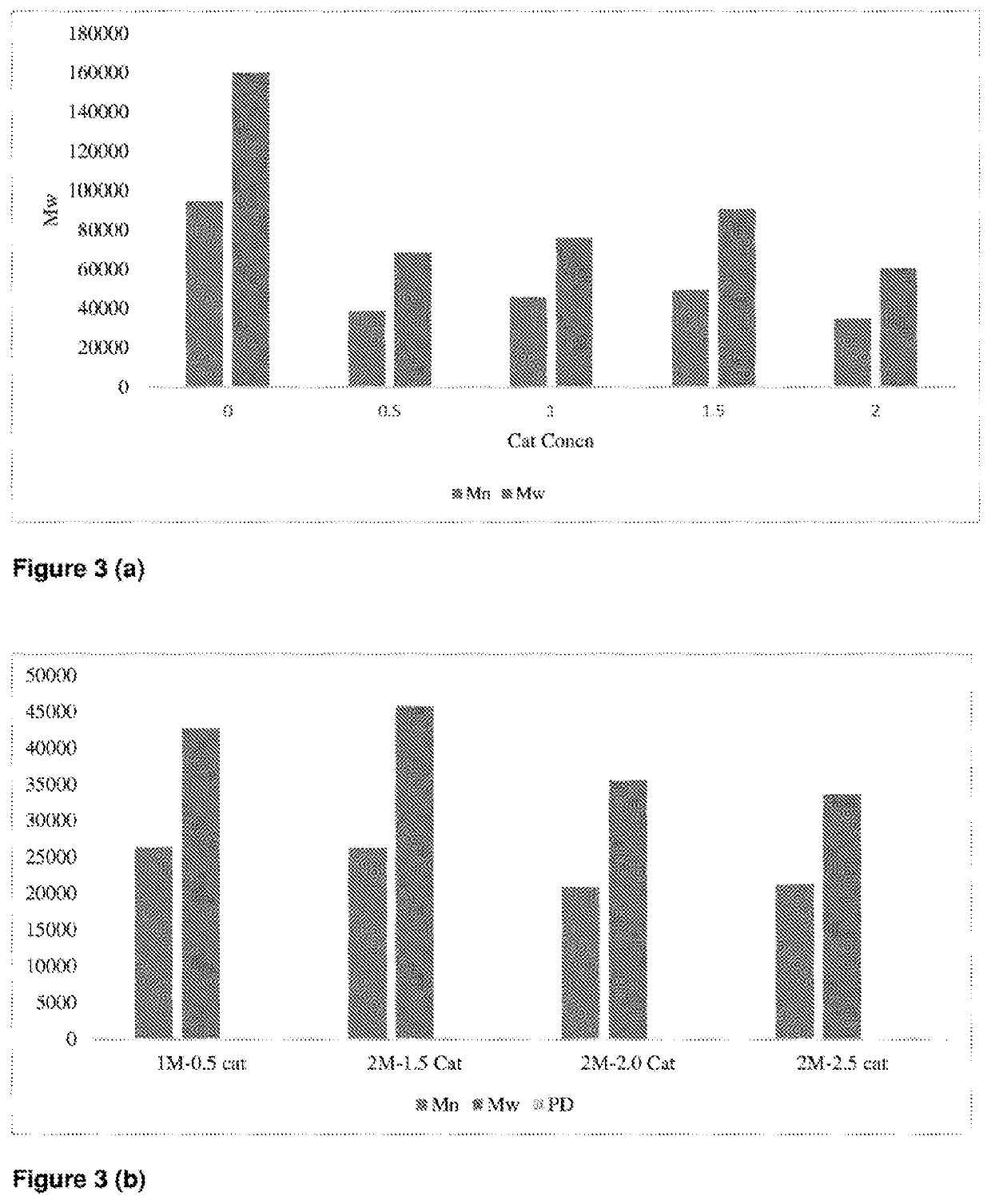Controlled release granular fertiliser
- Summary
- Abstract
- Description
- Claims
- Application Information
AI Technical Summary
Benefits of technology
Problems solved by technology
Method used
Image
Examples
example 1
Biodegradable Polymer Synthesis and Composition: PCL-PLLA Copolymer Synthesis
[0159]Granules of PLA were ground and dried for two hours in nitrogen own at 100° C. before use. The -caprolactone was dried on oil bath at temperature 100° C. under vacuum pump. Synthesis of copolymer with ε-caprolactone 15 and 20% by weight were prepared as follows:
[0160]PCL-PLLA polymer was synthesized by ring opening polymerisation using reactive extrusion.
Synthesis Scheme of PCL-PLLA Polymer
[0161]The actual polymerization time (depending on the amount of catalyst added and the temperature conditions used) varies between two hours and up to two days. It has to be noted that the limitation in finalizing the polymerization is the time needed for the remaining monomer to diffuse through the already formed high viscous polymer in order to reach the reactive sites. The polymer obtained with such a process often has a low thermal stability in melt processing. The polymerization time was in this case two hours...
example 2
Synthesis of PCL-PLLA Polymer Blend by Extrusion
[0165]PCL and PLLA blends were prepared by extrusion process using granules of both PCL and PLLA polymers with different loading of the catalyst BuOSn in amounts of 0.5, 1, 1.5, 2 and 3% by weight of the polymer respectively. PCLPLLA polymers were compounded at temperatures between 160-190° C. by using a Haake twin screw extruder. The extruded blends were pelletized into pellets in order to feed to the extrusion of films process. PCL / PLA blends were feed into the hopper of a film extrusion process with temperature profile 160-180° C. Three films of thickness 120, 160 and 200 micron were prepared.
example 3
Hydrolytic Degradation of PCL-PLLA Co-Polymer
[0166]The films prepared with different amount of catalyst in Example 1 were soaked in water at ambient temperature and showed various degradation profile shown in FIGS. 1 and 2.
[0167]FIG. 1 shows the GPC Molecular weight distribution curves for the blank soaked in water after five weeks. Samples with increasing amount of c-caprolactone and lower level of catalyst have higher Mp than those synthesized with higher amount of catalyst.
[0168]FIG. 2 shows Influence of increasing humidity on degradation of samples and blends in controlled chamber.
PUM
 Login to view more
Login to view more Abstract
Description
Claims
Application Information
 Login to view more
Login to view more - R&D Engineer
- R&D Manager
- IP Professional
- Industry Leading Data Capabilities
- Powerful AI technology
- Patent DNA Extraction
Browse by: Latest US Patents, China's latest patents, Technical Efficacy Thesaurus, Application Domain, Technology Topic.
© 2024 PatSnap. All rights reserved.Legal|Privacy policy|Modern Slavery Act Transparency Statement|Sitemap



